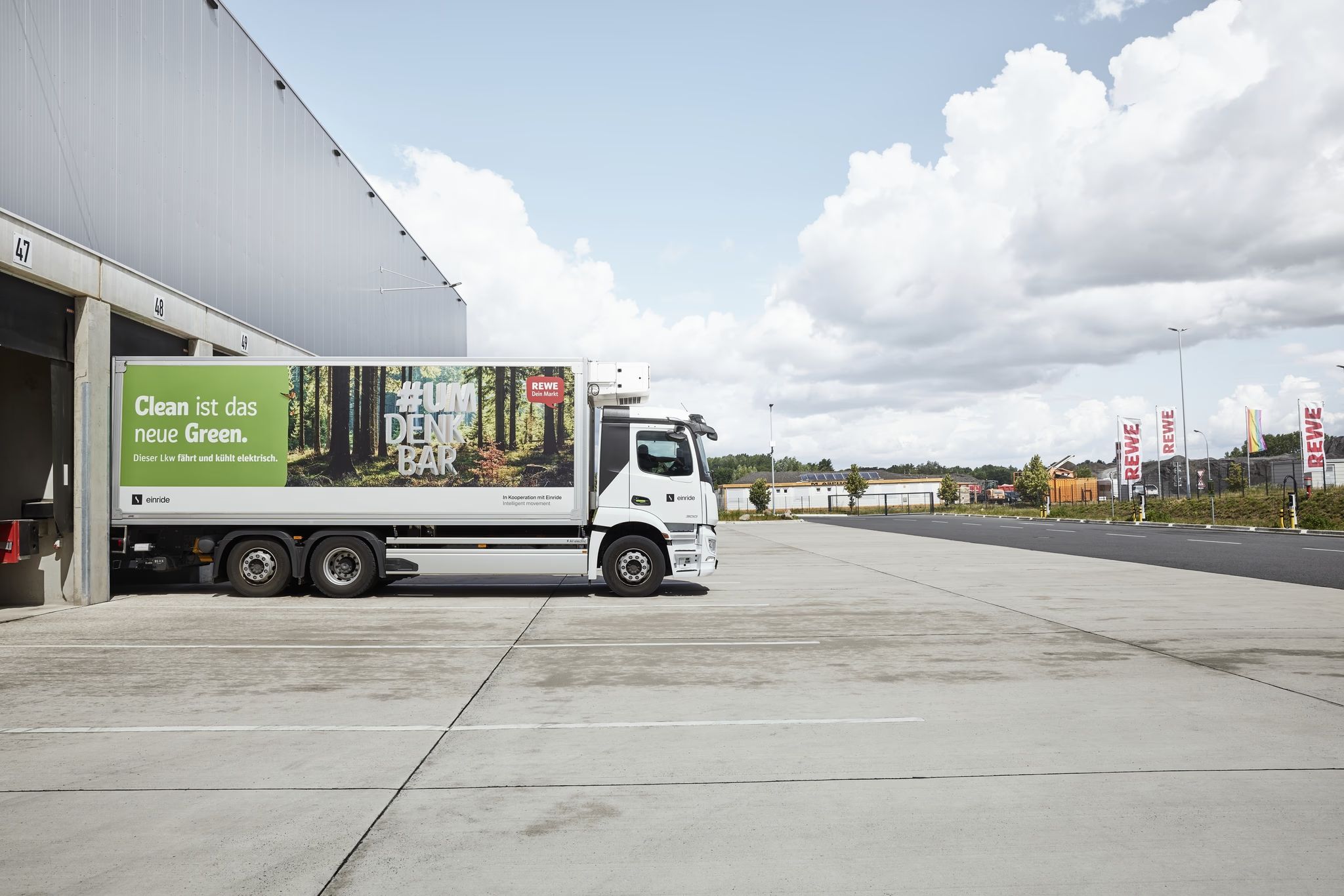
AI comes to the rescue of electrification: A first-of-its-kind study

The study analysed 38,000 orders across more than 500 locations, all of which were carried out by 200 vehicles operating for the German retail chain REWE within a 250 km radius of Berlin.
The authors compared two logistics strategies. The first simply replaced diesel trucks with battery-electric ones. The second combined this replacement with Einride’s proprietary AI-based transport planning tool, Planning AI.
Planning AI takes into account vehicle characteristics and performance, energy constraints, and real-time shipment data to create highly coordinated schedules for all resources in the system. It improves vehicle utilisation, optimises the charging process, and enables scalable, cost-effective operation of electric fleets.
Better performance, lower costs
The study found that with AI-based transport optimisation, electric trucks were able to carry 85% of the cargo volume and cover 54% of the distance previously handled by diesel vehicles.
By contrast, simply replacing diesel vehicles with electric ones, without any optimisation, achieved only 57% of cargo volume and 32% of the distance.
The use of AI tools also resulted in a reduction in total cost of ownership (TCO) for the fleet by 8–13%, depending on whether the comparison was made to current or historical diesel fleet costs. Without AI support, the TCO decrease was only 3%.
AI more important than subsidies and battery size...
As the authors of the report highlight, when conventional vehicles are simply replaced by electric ones, cost savings largely depend on government subsidies for battery-electric vehicles. However, when AI-based planning systems are introduced, reliance on such subsidies is reduced.
“Appropriate planning software that integrates route and charging planning at the fleet level has a significantly greater impact than, for example, increasing battery sizes or the uncoordinated expansion of charging infrastructure,” said Prof Dr Patrick Plötz, Head of Energy Economics at Fraunhofer ISI.
In terms of battery size, increasing it to 600 kWh could boost fleet electrification by as much as 25 percentage points, from 34% to 59%, in a scenario where diesel vehicles are replaced by electric ones. When this replacement is supported by AI planning tools, the electrification rate rises to 85% with standard batteries, and up to 94% with 600 kWh batteries.
...and also more vital than superchargers
The study also found that while installing 150 kW charging infrastructure at loading points helped reduce costs, the use of AI-based scheduling reduced electric vehicles’ dependence on such infrastructure.
For example, in a total fleet of 224 vehicles, the installation of 150 kW chargers would allow the electrified fleet to grow to 57%. However, implementing AI planning systems would reduce the total fleet size to 150 vehicles, thanks to more efficient utilisation, of which 77% would be electric.
“The study is the first to quantify how re-optimizing transport planning at the fleet level, rather than simply swapping diesel to electric truck-by-truck, is the key to making electric transport scalable and cost-effective,” Einride said in a statement.
Fot. Einride